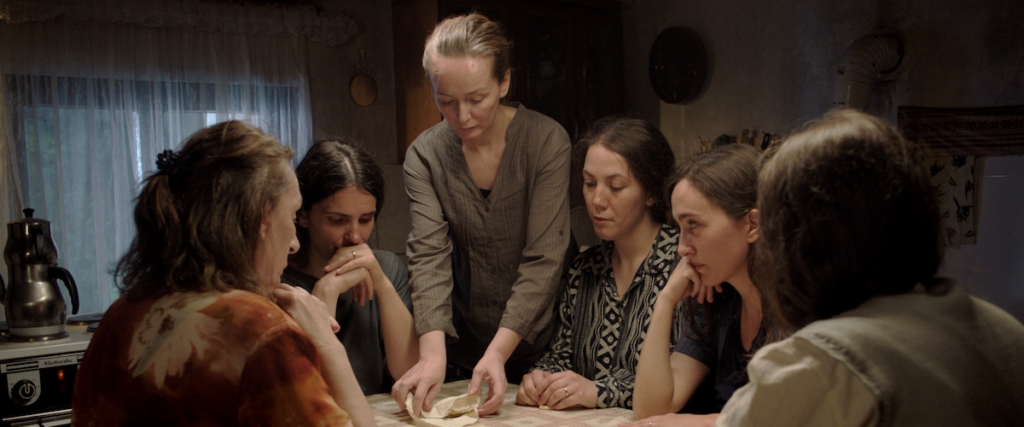Since Serbian militias entered villages in the Kosovar province in 1999, many boys and men have been missing, including Fahrije’s husband—a single parent who had been caring for their two children and her disabled father-in-law. Left to ensure her family’s survival, Fahrije takes matters into her own hands. She first obtains a driver’s license, then starts a small business, actions that provoke the wrath of the conservative, patriarchal local society.

The director, Blerta Basholli, originally from Kosovo, first encountered Fahrije Hoti’s story during an interview she gave on American television, in which she discussed the backlash she faced for seeking independence and proposing a cooperative to provide work for other widows in her community. At the time, the director was living in New York on a scholarship. Initially, she mistook the story for a joke due to her emotional and geographical distance from Kosovo. However, upon realizing the seriousness of Fahrije’s situation, she was inspired to delve deeper. Captivated by the story, the director began writing and directing what would eventually become Hive in 2011. A decade later, the film made history by winning all three major awards in the World Cinema section at the Sundance Film Festival—the only film to ever achieve this feat.
Basholli approaches the story with restraint and confidence, avoiding unnecessary melodrama or overemphasis. This is a tale of humanity and resistance, framed by a clear feminist perspective. In Hive, patriarchy is represented not only through visible actions—such as stones smashing Fahrije’s car windows, her father-in-law’s objections or an attempted assault by a supplier—but also through the absence of a male protector. The ghost of patriarchy lingers in the perception that Fahrije’s efforts to support herself dishonor her missing husband. Her grief is entangled with guilt: if her husband is dead, her actions are seen as a confirmation of his death, dissolving their marriage, and rejecting her eternal dependence on him. If, by some miracle, he were alive, many believe he would feel ashamed of her. Fahrije’s husband thus becomes like Schrödinger’s cat—both alive and dead—while society seeks to confine her autonomy.
The backdrop of numerous missing persons and the ongoing search for their remains adds an emotionally charged layer to the narrative, making Hive reminiscent of Parallel Mothers by Pedro Almodóvar. However, unlike Almodóvar’s melodramatic approach to historical tragedy, Basholli masterfully integrates the collective trauma of a community with one woman’s personal journey toward emancipation. Fahrije’s struggle becomes an example for the other widows in her village, who rally around her.
Central to Fahrije’s transformation is her evolving relationship with her late husband’s beehive, which gives the film its title. Initially, she is a foreign presence, vulnerable to stings despite protective gear, and haunted by the notion that her husband had “never been stung.” However, as she confronts societal obstacles and normalized misogyny disguised as tradition, she finds her strength. She emerges as the queen of the hive, uniting the worker bees to create an independent, resilient ecosystem that requires no male master. This symbolism underscores the real-life success of Fahrije and her colleagues, celebrated in the film’s credits. This way, Hive highlights the critical importance of women’s solidarity in challenging male dominance.
Fahrije’s story is one of hope in a nation still haunted by the ghosts of a brutal war. The fact that the narrative is based on true events and a real woman makes its impact even more profound.